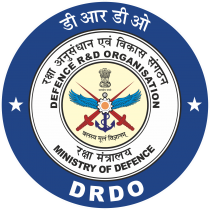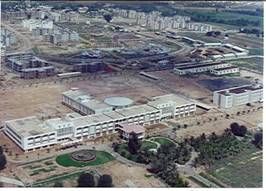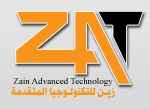
Categories
- Electrical, Electronics & Electro-optics
- Radar, Sonar, Navigation, Targeting, Surveillance
- Services (R&D, training, engineering, consultancy, …)
The genealogy of ELECTRONICS & RADAR DEVELOPMENT ESTABLISHMENT (LRDE), originates from the Inspectorate of Scientific Stores created in 1939 at Rawalpindi. This was re-christened as TDE (Instruments & Electronics) in early 1946 and relocated in Dehradun. With electronic industrial complexes sprouting in the salubrious Bangalore outskirts, the Electronics part of TDE (I&E) branched off to settle in this seminal city in 1955. Coinciding with the promotion of DRDO, the then TDE (E) was bifurcated into Inspectorate of Electronics Equipment (ILE) and LRDE on 01 Jan 1958 to meet the aspiration of Defence Services. LRDE moved to the present serenial location in 1986 to find place for expansion and growth.
Born in the barracks of High Grounds in Jan 1958 as ELECTRONIC RESEARCH AND DEVELOPMENT ESTABLISHMENT, got the present name Electronics & Radar Development Establishment in Jun 1962. With the nucleus personnel, equipment and material inherited from parental TDE (E), initial emphasis was laid to undertake such tasks as investigation of defects in equipment or necessary modifications required to improve the performance of equipment covering the entire spectrum of defence electronics.
During the initial years, the necessity of redefining the objectives of Establishment was appreciated to reorient & to undertake development of modern sophisticated and complicated radio, line communication, radar, electrical, electro-medical equipment, devices, their accessories with maximum indigenous content. With every passing year, efforts were concentrated in recruiting committed, qualified personnel and organizing the various divisions or departments, so as to function in a well-coordinated fashion for undertaking meaningful development of systems that could withstand the rigmarole of field acceptance. Early in life, LRDE visualised the scientific and logical guidelines for the systematic development of electronic equipment. The roles of DRDO, User Agencies, the Inspection Authorities and Maintenance Authorities were orchestrated through DDPIL-64. LRDE played a major role in bringing out the modified DDPIL-69 which has withstood the test of time till date, albeit practical modifications or adaptations. Structured and partnership oriented development processes were born in late sixties. The functional based Radar Divisions, the Engineering Service Divisions, in consonance with professional project management practices, came into existence during 1967-68.
Vigorous activities were undertaken in the area of radars. Modifications to Fire Control Radar AA No 3 Mk7, development of S-1000 Mk I radar based on CSF radar ER 370 and FAX Mk I radar for locating mortars and guns for Artillery and Battle Field Surveillance Radar to detect moving men and vehicles were major innovative achievements in the radar area during that period. In the absence of open literature on modern radars, the scope in sixties was limited to learn through development of modules / components for radars in Service. The confidence building exercise won the day and firm foundation was laid for system approach of seventies and eighties.
The unprecedented growth of LRDE during the second half of the Golden Jubilee period is due to multitude of enticing or compelling scenarios. Needless to say that the design, development and delivery of INDRA series radars, followed by Rajendra Phased Array Radar, WLR, BFSR-SR, 3D CAR, ROHINI, REVATHI, 3D-TCR, BHARANI, ASLESHA, XV-2004 and still counting, is the true reflector of maturity of LRDE, not only in the mastering of ground based, airborne and ship borne complex radar systems, but also practice of concurrent system engineering, R&D Industry Partnership and Professional approach to Technology & Project Management. The users unflinching faith has transformed LRDE as a force to reckon with. Many of such radars are now accepted or inducted by the users.
The present day quoted technologies such as Multibeam Antennas, Phased Arrays, Slotted waveguide and Patch arrays, High Speed Computing Programmable Signal and Data Processors, high purity RF sources, wide band coherent multi channel receivers, high power coherent transmitters find their roots traced back to the two decades spanning 1970 - 1990.
In nineties and beyond the microwave, digital and software technologies changed the world. LRDE seized the opportunities and there has been no looking back. Radar became sole focused work area for LRDE in 2001. Along with this, came the intense competition from global radar houses, as the manifestation of liberalisation and globalisation policies of Government of India.
LRDE transformed itself as a matured, dependable system house of Radar, adopting modern Project management Practices, promoting industries as partners and collaborators, and developing human resources. Major thrust was given for self-reliance in technologies, components and industrial relationships.
With the activities directed towards design and development of complex, state-of-the-art electronically scanning TR module based active array ground based and airborne radars, it is a matter of time when the world will witness the marvelous achievements of LRDE in digital array radars.
Electronics & Radar Development Establishment (LRDE)
- CV Raman Nagar, Bangalore, India
- 918025243873, 918025243816
- 91802524291
- director@lrde.drdo.in
- www.drdo.gov.in/labs-and-establishments/electronics-radar-development-establishment-lrde




